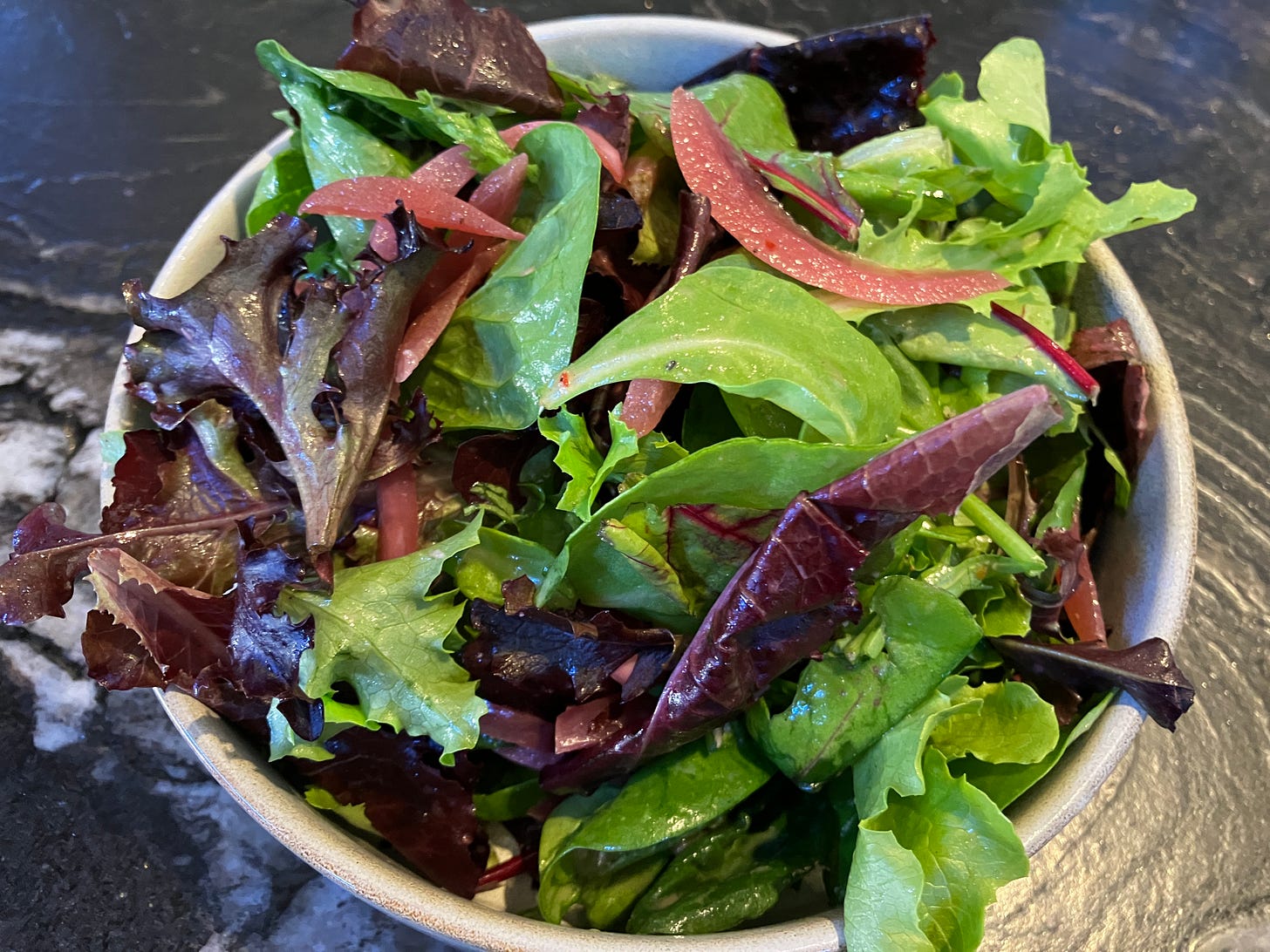The British Are Beefeaters, But They Care About The Planet
A new survey reveals some contradictions in British dining habits
Hello and welcome to this week’s CulinaryWoman Newsletter! Welcome to our newest subscribers and welcome back to returning readers. Happy that you are here! Happy Thanksgiving Weekend to our Canadian friends. This is an international edition of the newsletter today.
How People Across The Pond Are Dining
Whenever I am curious about the dining trends that might appear in America, I look at what’s happening in Britain. Stereotypes of inedible British food have long been put to rest. London abounds with every type of cuisine under the sun, thanks to immigrants, tourists and locals who are willing to explore new trends.
On my last trip over, I was pleased to see pride taken in local British cheese, meats, seafood, fruits, veggies, and baked goods. I was especially impressed at how widely vegetarian and vegan dishes were available. London even has a monthly vegan market in King’s Cross.
Even so, the British remain enthusiastic consumers of meat, according to a new survey by Good Food Nation, part of BBC’s Good Food media brand, which includes a magazine, podcast and events.
The survey of 2,000 adults, published in the October issue of Good Food, revealed some interesting contrasts.
On average, participants said they eat meat four days a week. Nineteen percent of people surveyed eat meat every day, while twenty-two percent eat it five to six days a week. Thirty-two percent eat it three to four days a week and 20 percent eat it one or two days a week.
Men are more likely than women to eat meat every day of the week, while Millennials and Gen Z who were surveyed are most likely across the generations to eat meat every day of the week. Only 11 percent of Boomers and just two percent of elders over 78 eat meat daily.
That’s actually less than Americans and Portuguese, who are the biggest consumers of meat in the world. A USDA survey finds that the average American eats nearly 225 pounds of meat per year. That works out to approximately six ounces per day.
In the other direction, seven percent of the British survey respondents said they were vegetarians, while three percent are vegans.
Sympathy for sustainability
About 29 percent said they are willing to change their eating habits to be more sustainable, while 23 percent said it is already important to them that their food choices are sustainable.
Twenty percent said they often choose brands that are known for their sustainable practice. Just over 26 percent said they do not throw away any food during the week.
When it comes to understanding how food is distributed, 60 percent said they didn’t grasp the concept of a carbon footprint. But 25 percent said they’d be willing to change their diet with more information.
“This year’s Good Food Nation survey is a powerful reminder that as a nation, we care about what we eat and how it impacts the planet,” said Lily Barclay, the content director of Good Food.
What’s happening in the U.S.
According to the National Library of Medicine, American diets shifted during the pandemic. About 23 percent of those surveyed said they reduced their meat consumption.
Part of that could be because they couldn’t buy meat — remember the meat shortages, due to Covid outbreaks in packing plants, coupled with the shortage of truckers to take meat to grocery stores?
But once the crisis was over, meat consumption rose again.
However, the number of people eating plant rich diets more than doubled, from 12 percent in 2019 to 25.8 percent in 2022.
In the U.S., about three percent of diners are vegetarian and three percent are vegan, according to the Vegetarian Resource Board. They tend to be concentrated in certain geographic areas.
According to Wallet Hub, Los Angeles is the nation’s most vegetarian friendly city, followed by Orlando, Florida, Portland, Oregon, San Diego, and Seattle. Austin, San Francisco, Miami, Phoenix, and Tampa round out the top 10.
Interestingly, New York, Washington, D.C., Las Vegas and Chicago rank beyond the top cities. Maybe it’s the preponderance of steakhouses in those places, which have always been restaurants for power players. You can read the whole list here.
Toronto Revives Its Outdoor Dining Program
In 2022, Toronto’s outdoor dining program, called CafeTO, saw a slump in participation. Several hundred restaurants dropped out, amid complaints over red tape, new costs and co-ordination problems between the city’s transportation, economic development and licensing departments.
The city’s new mayor, Olivia Chow, vowed to reverse the decline. And the effort worked, according to the Toronto Star.
More than 1,400 businesses took part this summer, including 340 curb lane cafes. These are businesses that were allowed to set up in spaces along curbs, in addition to sidewalk cafes adjacent to restaurants.
The program was created in 2020 in the wake of the pandemic, as a temporary way for restaurants to serve patrons beyond takeaway. CafeTO was made permanent a year later, but participation dropped due to the obstacles in getting licenses.
“Sometimes the approval was so late that most of the season was gone,” Chow said Friday. “Well, we fixed it.”
Who Are The Richest People In The Restaurant Business?
There are only 11 billionaires in the food business, according to Forbes Magazine, which counts 2,781 billionaires around the globe. The person who leads the list is not from America or Europe.
It’s Ravi Jaipura, who runs franchised KFC and Pizza Hut restaurants across India. That has allowed him to accumulate $16.8 billion in wealth.
The next three slots are a tie, at $10.9 billion. They belong to members of the Cathy family, who own Chick-Fil-A, daughter Trudy and sons Bubba and Dan. Tilman Fertitta, owner of Landry’s, ranks next at $10.3 billion, while Todd Graves of Raising Cane’s rounds out the top group at $9.5 billion.
(As a Caniac, aka a fan of Cane’s, I have contributed to that prosperity. I can’t wait until we get Cane’s in Ann Arbor.)
You can read more about the list in Restaurant Business.
You’re Invited To Bonny Day 2024
Thursday (Oct. 17) marks the ninth anniversary of my mother’s death. Rather than mourn, we do something delicious in her memory. This year, Bonny Day is taking place at Spiedo in Ann Arbor.
The Maynards are treating guests to a free chocolate tahini shake with their meal, while supplies last. My mum loved chocolate (especially See’s) and the shake is nut free and dairy free, which makes it easy on the tummy. I love this shake and get it almost every time I eat at Spiedo.
I’ll be going to lunch after my Pilates class, around 12:45 pm, and it would be fun to see you there. But Bonny Day will run throughout Thursday.
Spiedo is at 307 S. Fifth Avenue. You can park next door in the lot for the downtown branch of the Ann Arbor District Library and it is a few steps away.
Happy Bonny Day!
Keeping Up With CulinaryWoman
Along with the Tigers, Detroit is becoming known as a hub of mobility innovation. My story for the Sunday New York Times looks at three start-ups at NewLab, the innovation lab that sits next to the restored Michigan Central train station. Here’s a gift link to read it.
The highlight of my week, my month and my baseball year was seeing the Tigers beat the Cleveland Guardians in the American League Division Series at Comerica Park on Wednesday.
I parked at the library and caught the D2A2 express bus into Detroit. It’s just $8 each way, $4 for seniors, and whisks you to Grand Circus Park, a quick walk from Comerica. The bus is new, comfortable, has free WiFi and you can charge your electronic device at your seat.
While I was at the game, I went to the taco stand near Section 129 that everyone told me to check out. They were right. You can get stewed chicken or barbacoa in tacos or nachos. Go for the nachos and have napkins.
That is, plan on eating them next season. Sadly, Cleveland won the ALDS on Saturday. But I’m so proud of our Gritty Tigers. They achieved way more in 2024 than anyone expected and a bright future lies ahead. Now, go Dodgers! All the way, LA!
I’ll be back tomorrow with Red Beans & Advice for our paid subscribers. This fall, I’m reviewing episodes of The Great British Bake Off and The Great Canadian Baking Show. This was Bread Week on GBBO, and there was drama.
I’ll see paid subscribers then and everyone else next week.










